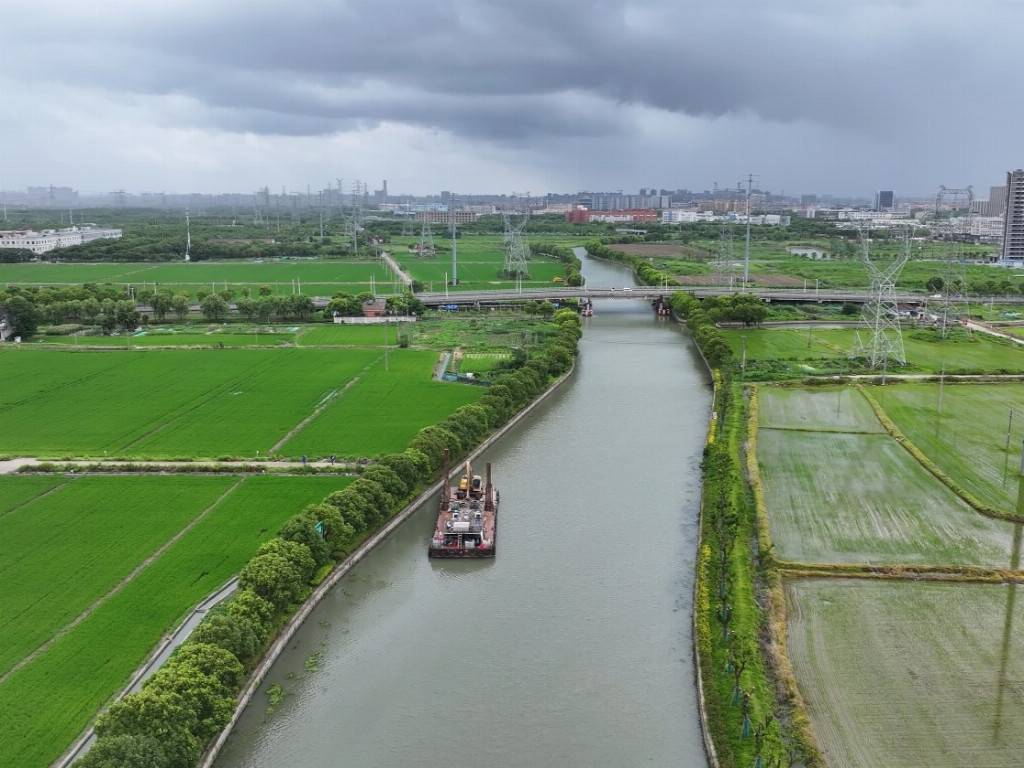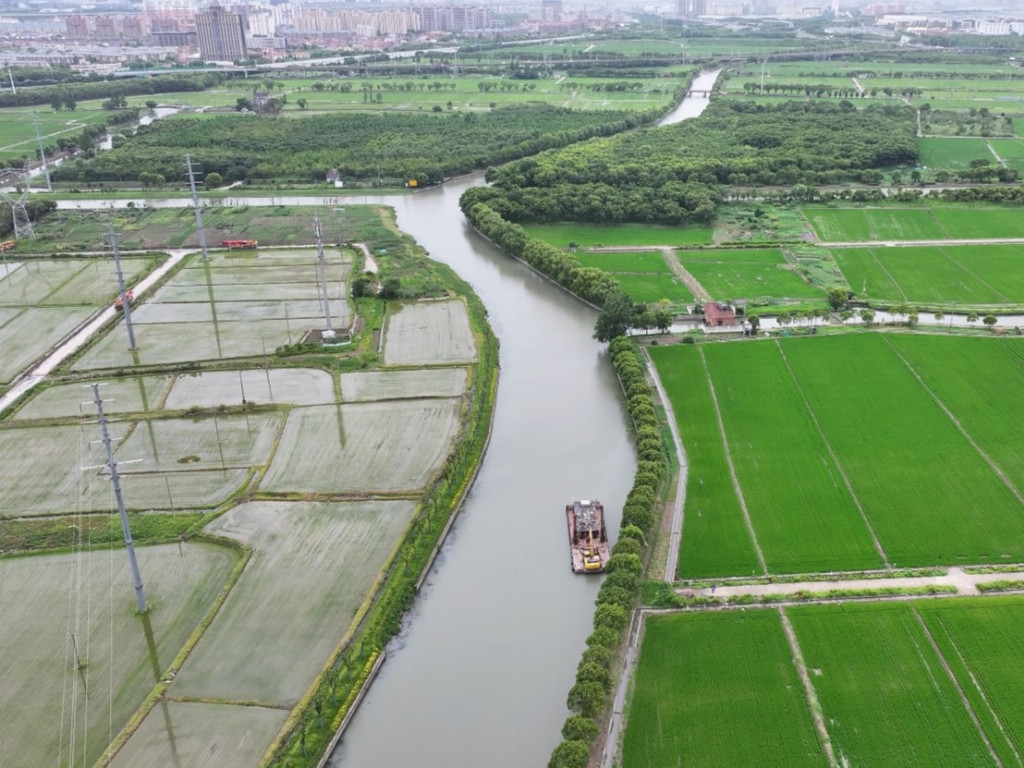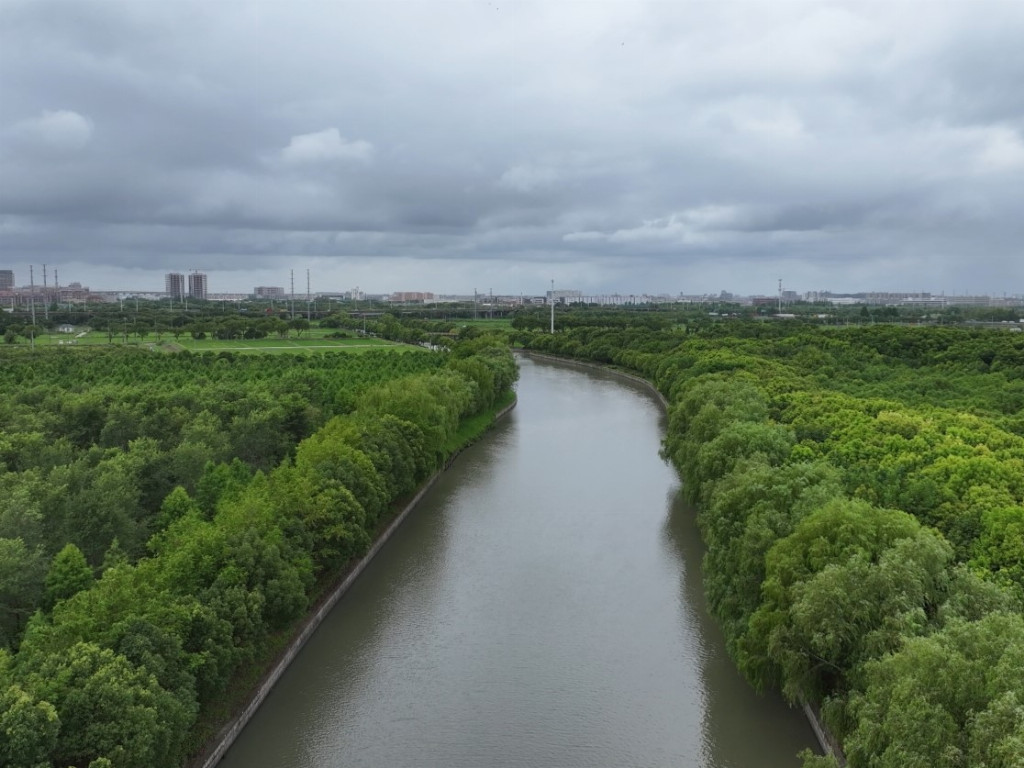
This project is a maintenance dredging project within Shanghai's inland river channel projects, located in Songjiang District, Shanghai. It borders the Dianpu River to the north and the Zhuanxin River to the south. The total length of the regulated channel is 5.93 kilometers, with a total work volume of 101,300 cubic meters. The main construction content involves removing silt and sediment from the channel.
The Beimaojing Channel boasts a unique geographical location and is technically classified as Grade VII. Its design standards must precisely accommodate the passage needs of small vessels, imposing stricter requirements on construction precision and environmental control. Certain river sections are in close proximity to buildings, with the nearest distance being merely 5 meters, resulting in a narrow construction space. Such limited space makes it difficult to implement traditional construction methods.
In response to this complex construction environment, the project team carefully formulated a detailed construction plan. To protect the existing buildings and revetment structures, DGPS positioning technology was adopted during the construction process, combined with regular instrument calibration and monitoring measures to improve the positioning accuracy of ships, keeping the over-depth within 0.2 meters and the over-width within 0.5 meters. At the same time, one settlement displacement monitoring point was set up every 10-15 meters along the line, and observations were conducted at the frequency required by the design to ensure timely handling of any abnormalities.

The construction area is densely packed with underground pipelines, further increasing the difficulty and risk of dredging. The project team established a special pipeline investigation team to conduct a detailed survey of the underground pipelines and set up warning signs at corresponding locations, achieving zero accidents involving underground pipelines throughout the construction process.
To further optimize the construction process and enhance project efficiency, the project team proactively adjusted the construction strategy, adopting equipment such as self-propelled backhoe dredgers, and dynamically adjusting the vessel allocation ratio to optimize the operation process and further shorten the construction period. As a result, the overall construction duration was reduced by 30 days, improving both construction efficiency and organizational level.
In addition, the project is located at the junction of residential and industrial areas in Songjiang District. The project team has also taken measures such as arranging work hours reasonably and reducing nighttime construction to effectively control noise and pollution, thereby minimizing the disturbance to the lives of surrounding residents. At the same time, an effective communication mechanism has been established. Through multiple coordination meetings and visits to surrounding residents, the team actively maintains close contact with the government to ensure that the feedback channel for residents remains unobstructed.

The completion of this project has significantly enhanced the navigation capacity and safety of the Beimaojing waterway, optimized the water ecosystem, and achieved a win-win situation for both economic and ecological benefits. At the same time, it has further strengthened the function of Songjiang's water hub, providing a reference example for the development of green shipping and high-level water environment governance in Shanghai. (Qin Yiming, China Third Harbor Engineering Co., Ltd.)
